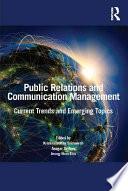
Applied Public Relations
Cases in Stakeholder Management
Applied Public Relations provides readers with the opportunity to observe and analyze how contemporary businesses and organizations interact with key groups and influences. Through the presentation of cases covering a wide variety of industries, locations, and settings, authors Kathy Brittain McKee and Larry F. Lamb examine how real organizations develop and maintain their relationships, offering valuable insights into contemporary business and organizational management practices. McKee and Lamb place special emphasis on public relations as a strategic management function that must coordinate its planning and activities with key organizational units - human resources, marketing, legal counsel, finance, and operations, among others. A commitment to the ethical practice of public relations underlies the book, and students are challenged not only to assess the effectiveness of the practices outlined, but also to understand the ethical implications of those choices. This second edition includes the following key features: New and updated cases Additional Professional Insight commentaries Expanded use of charts and photos An appendix with the PRSA Member Code of Ethics and the IABC Code of Ethics for Professional Communicators A companion website with resources for the student and the instructor. With its practical orientation and scope, Applied Public Relations is a useful text for courses on public relations management, public relations cases and campaigns, and integrated communication management.
- ISBN 13 : 1135231508
- ISBN 10 : 9781135231507
- Judul : Applied Public Relations
- Sub Judul : Cases in Stakeholder Management
- Pengarang : Kathy Brittain McKee, Kathy Richardson, Marcie Hinton, Larry F. Lamb,
- Kategori : Language Arts & Disciplines
- Penerbit : Routledge
- Bahasa : en
- Tahun : 2010
- Halaman : 303
- Google Book : http://books.google.co.id/books?id=RkCPAgAAQBAJ&dq=intitle:Public+Relation+Management/+Public+Relation+Management&hl=&source=gbs_api
-
Ketersediaan :
This second edition includes the following key features: New and updated cases Additional Professional Insight commentaries Expanded use of charts and photos An appendix with the PRSA Member Code of Ethics and the IABC Code of Ethics for ...









